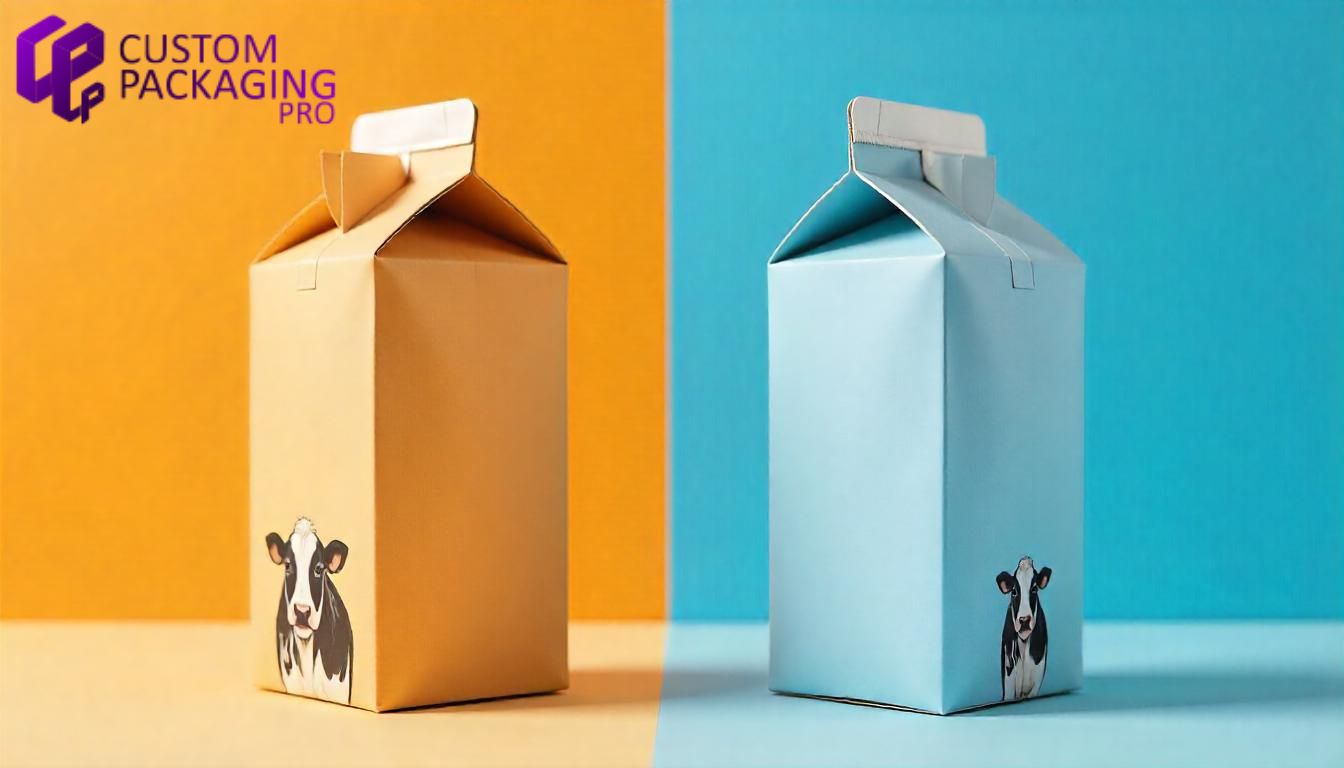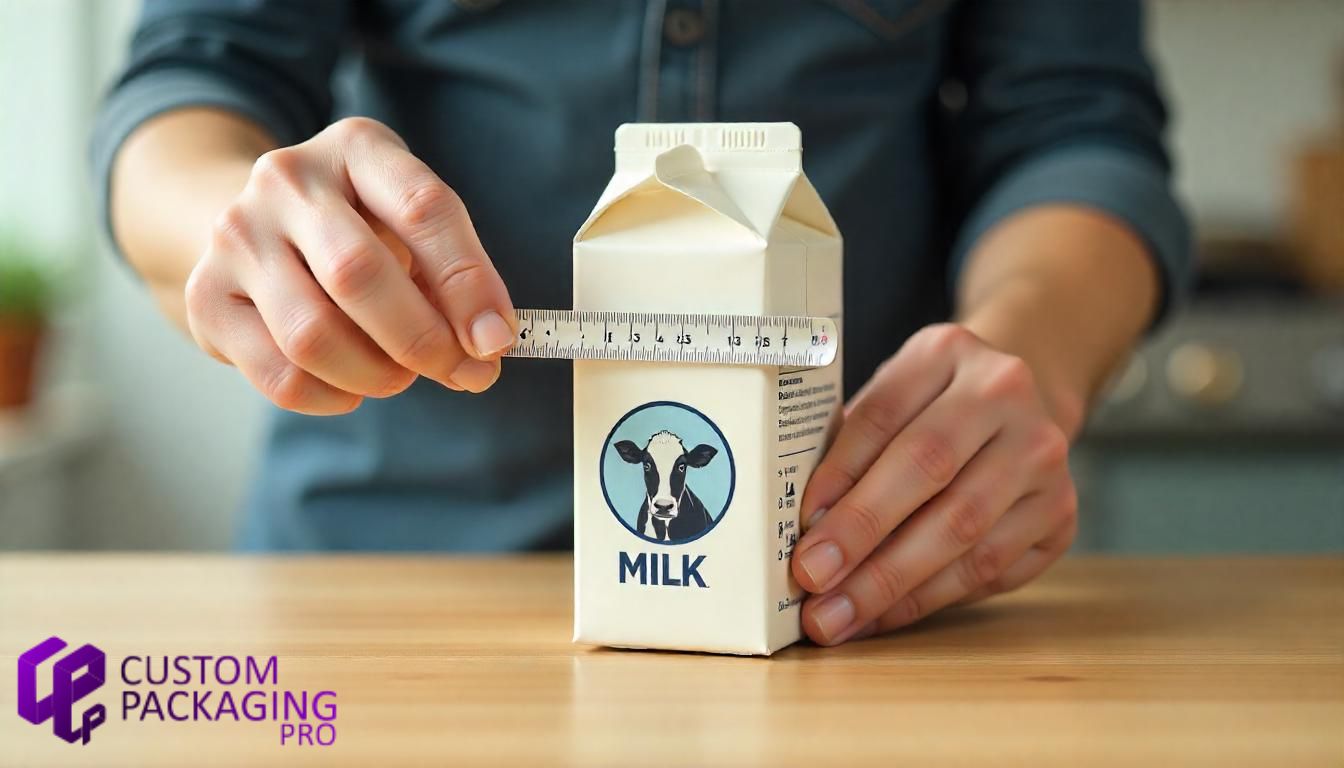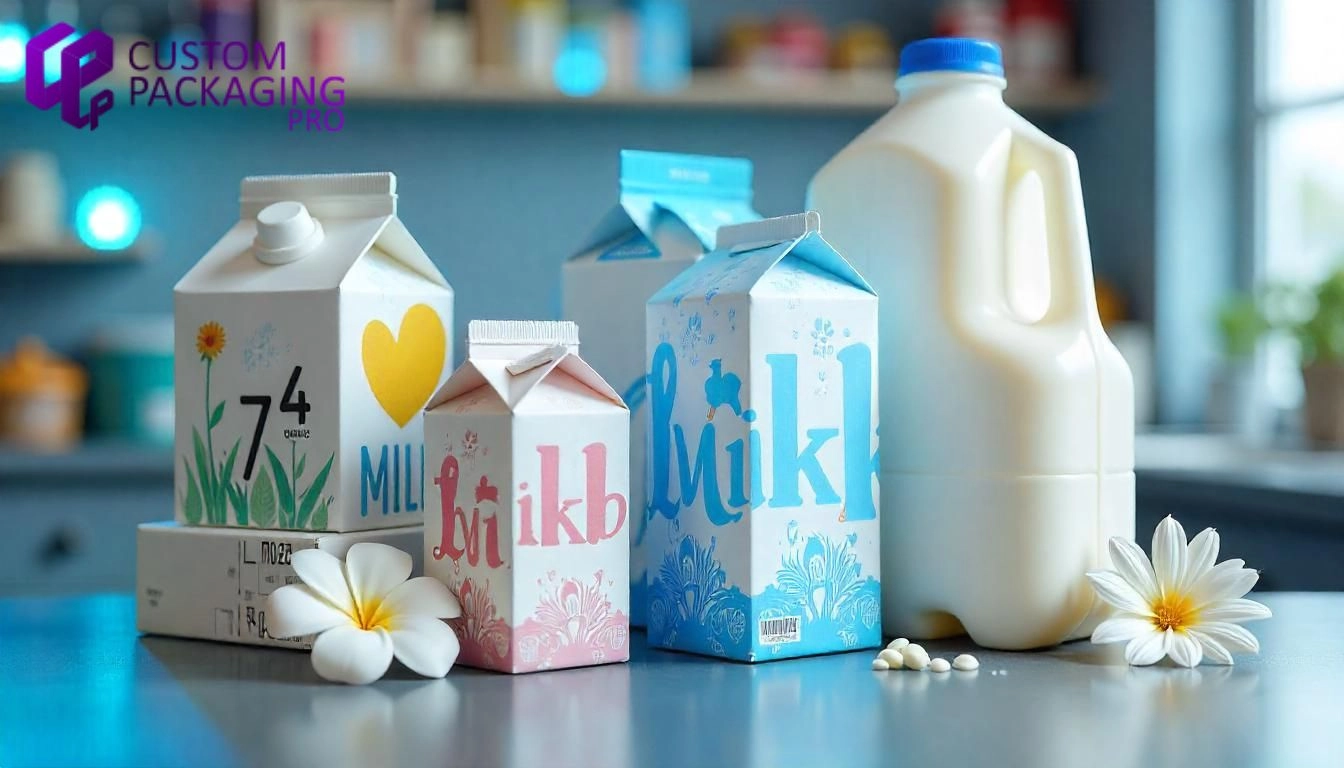May 09, 2025
Size It Right: How to Measure Your Milk Carton Box Correctly
The right size of the boxes plays a significant role in ensuring the safety of your products, regardless of the industry. Guarding your product begins with selecting the proper packaging, which involves having the precise box sizes. Whether you are a dairy manufacturer or a food retailer, being aware of milk carton box sizes is important for retaining a flawless fit and ultimate protection. In this blog, we will dissect the typical milk carton sizes in inches and centimeters to assist you in ordering with assurance.
Pick the Perfect Packaging Material
The first thing is to determine which material is appropriate for the milk. There are two distinct types of environmentally friendly materials used in the market. Each material utilized a thin strip of plastic to keep the milk fresh within the milk carton box and prevent it from spilling. These two materials utilized for the cartons are listed below:
Paperboard
Paperboard is one of the most frequently used packaging materials in various sectors. It's a natural material, lightweight, and economical. A half-pint carton of milk is packaged on paperboard to ensure its safe transportation to customers. Paperboard packaging alone is not used to create milk carton boxes. A small layer of food-grade plastic is added inside for the safety of the milk. The plastic protects the milk in a carton from outside influences like heat, punctures, and moisture.
Cardboard
Cardboard is a durable material that can protect a product from external influences like dust and moisture to a certain level. Companies utilize cardboard packaging for their milk cartons because it is light and inexpensive, too.
Cardboard milk cartons have a layer of LDPE or other food-safe plastic to secure the safety of the milk. The thickness of the plastic film varies depending on the needs of the product. You may use your own custom thickness for both the plastic and cardboard layers according to your brand's requirements.
Other than these two paper packaging options, there is another plastic option available. Plastic is another popular material for packing and shipping milk. It can protect the milk from external forces like pressure, dust, water, heat, and bacteria to a great extent. But what is crucial to understand here that not all plastic types are food-grade.
Three popular plastics used to produce milk cartons are LDPE, HDPE, and PP. These materials provide excellent protection against external influences and maintain the milk's freshness during transportation. You can personalize the size milk and the thickness of your milk carton plastic boxes according to brand requirements.

Understanding Milk Carton Volume in OZ
Let's take a look at how many oz in a carton of milk. There are various carton sizes of milk and each size provides varying amounts of liquid. You can have the usual four sizes in order to draw in more customers. Each size is in a standard size but with a custom box maker, you can alter the thickness and other measurements of the liquid boxes. Below are four standard carton sizes found in the market:
Customize Milk Carton Sizes in Inches
Half Pint
Ideal for a single serving, the half-pint milk carton is compact and easy to carry. It can hold up to 12 ounces of milk and is perfect for schools or cafes. Custom handles can be added for convenience. Common sizes include:
- 2.25" x 2.25" x 2.75” inches
- 2.8" x 2.8" x 4" inches
Quart
Great for individuals or those with limited fridge space, the quart carton of milk holds up to 32 ounces. It’s a practical choice for light milk users who prefer fresher milk. Common sizes include:
- 2.75" × 2.75" × 7.5" inches
- 3.6" x 3.6" x 8.3" inches
Half Gallon
A popular option for small families, half-gallon cartons offer more volume without being bulky. They’re sleek, fridge-friendly, and customizable. Common sizes include:
- 5.06" x 4" x 5.12" inches
- 6" x 4" x 8" inches
Gallon
Designed for larger households, gallon cartons ensure you don’t run out of milk quickly. Though they take up more space, they’re economical and customizable. Common sizes include:
- 7" x 4" x 7.5" inches
- 7.5" x 4.5" x 8" inches
Customize Carton Milk Size in Centimeters
After you get the dimensions in inches you can convert them into centimeters by multiplying the figures by 2.54. Most of your customers will take the measurements in centimeters so it is wise to know how a standard size in inches will be measured in centimeters. Below are the four standard sizes when taken in centimeters:
Half Pint
According to customer requirements and brand choice, half-pint cartons have small sizes ideal for single portions. Measured in centimeters, typical dimensions are:
- 5.7 cm x 5.7 cm x 7 cm
- 7.1 cm x 7.1 cm x 10 cm
Quart
Cartons in quart size are favored by lone consumers and tiny refrigerators. Converting from inches, following are two generally accepted standard dimensions in centimeters:
- 7 cm x 7 cm x 19 cm
- 9.1 cm x 9.1 cm x 21 cm
Half Gallon
Half-gallon cartons achieve a middle ground between capacity and convenience for mid-level capacity. Two standard sizes are usually available in centimeters as follows:
- 12.8 cm x 10 cm x 13 cm
- 15.2 cm x 10 cm x 20.3 cm
Gallon
Gallon cartons are the pick for big households and heavy-use applications. To order customized or standard sizes to centimeters, select from:
- 17.8 cm x 10 cm x 19 cm
- 19 cm x 11.4 cm x 20 cm
How to Measure Milk Carton Box Sizes Based on Shape
Size measurements of milk cartons can change based on style and box shapes. It is important to comprehend the sizes based on the shapes of the boxes. Below are the sizes of some of the most commonly used carton shapes of milk:
Rectangular Cartons
One of the most basic milk carton box forms is a rectangle. It's easy to measure rectangular cartons. You only need to take the length, width and height of the boxes. To determine the volume of rectangular boxes, you can apply the formula:
Volume = length x width x height
Gable Top Cartons
Gable top boxes are renowned for their distinctive style and eye-catching appearance. In milk cartons, the gable section is left empty and has a nozzle and a cap to pour milk. You can measure the size of gable boxes in the same way as rectangular boxes. You must reserve the volume gable top to avoid confusion, though.
Cylindrical Cartons
It is also possible to pack milk using cylindrical cartons. You may calculate the cylinder's height and radius to find the volume of such packaging cartons. Following is the formula you may apply to calculate the milk carton box size:
V=πr2h

Boost Sales with Perfectly Sized Custom Boxes
Those days are gone when companies used to put their products in brown boxes without designs or colors. Nowadays, there are millions of companies competing with each other and they require more than quality products. You can make your brand identity different and can bring more customers to your products. In case you need top-class boxes with attractive designs and colors, feel free to contact Custom Packaging Pro today.
It's worth noting that while this blog focuses on milk carton dimensions, the milk crate dimensions, which is a separate item used for transporting multiple milk cartons, is typically around 13 x 13 x 11 inches (approximately 33 x 33 x 28 cm).
FAQ
Q1. How do you measure a milk carton box?
A. Measure the length, width, and height of the carton from the outside edges using a ruler or tape measure for accurate dimensions.
Q2. What are the standard milk carton sizes?
A. Common sizes include half-pint (approx. 2.25" x 2.25" x 2.75"), quart, half-gallon, and gallon, each with its own dimension ranges.
Q3. Why is measuring milk cartons accurately important?
A. Accurate measurements ensure proper packaging, branding fit, and storage compatibility, especially for custom orders.
Q4. Do milk carton dimensions include the spout or cap area?
A. No, standard dimensions usually refer to the main body of the carton, excluding the spout or cap unless specified.
Q5. Can I customize milk carton dimensions for my brand?
Yes, many manufacturers offer custom sizing and shapes based on your packaging needs and design preferences.
Q6. What are the standard milk crate dimensions?
A. Standard milk crate dimensions are 13" x 13" x 11" (length x width x height), though sizes may vary slightly depending on the manufacturer and intended use.












